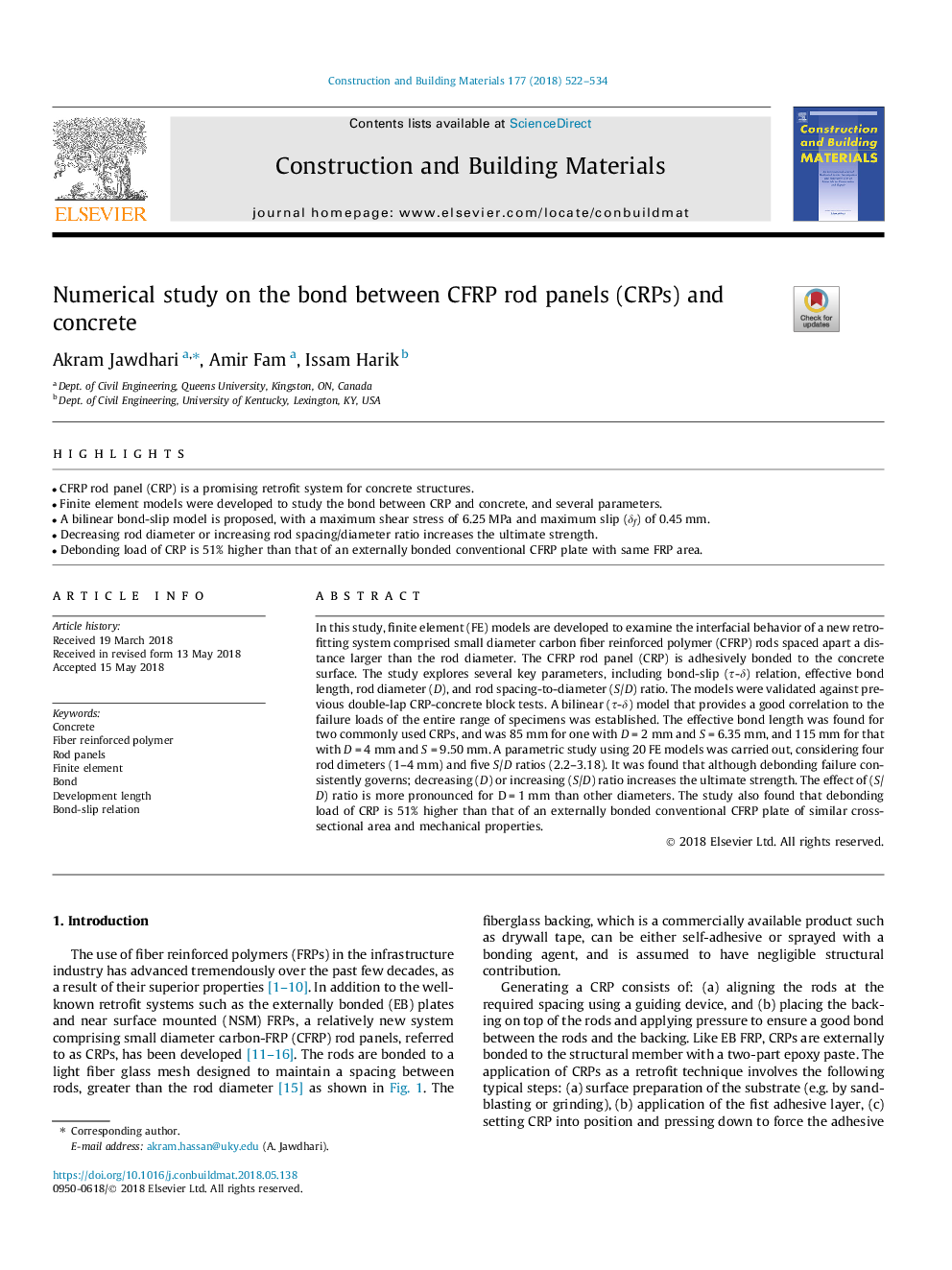| Article ID | Journal | Published Year | Pages | File Type |
|---|---|---|---|---|
| 6713129 | Construction and Building Materials | 2018 | 13 Pages |
Abstract
In this study, finite element (FE) models are developed to examine the interfacial behavior of a new retrofitting system comprised small diameter carbon fiber reinforced polymer (CFRP) rods spaced apart a distance larger than the rod diameter. The CFRP rod panel (CRP) is adhesively bonded to the concrete surface. The study explores several key parameters, including bond-slip (Ï-δ) relation, effective bond length, rod diameter (D), and rod spacing-to-diameter (S/D) ratio. The models were validated against previous double-lap CRP-concrete block tests. A bilinear (Ï-δ) model that provides a good correlation to the failure loads of the entire range of specimens was established. The effective bond length was found for two commonly used CRPs, and was 85â¯mm for one with Dâ¯=â¯2â¯mm and Sâ¯=â¯6.35â¯mm, and 115â¯mm for that with Dâ¯=â¯4â¯mm and Sâ¯=â¯9.50â¯mm. A parametric study using 20 FE models was carried out, considering four rod dimeters (1-4â¯mm) and five S/D ratios (2.2-3.18). It was found that although debonding failure consistently governs; decreasing (D) or increasing (S/D) ratio increases the ultimate strength. The effect of (S/D) ratio is more pronounced for Dâ¯=â¯1â¯mm than other diameters. The study also found that debonding load of CRP is 51% higher than that of an externally bonded conventional CFRP plate of similar cross-sectional area and mechanical properties.
Related Topics
Physical Sciences and Engineering
Engineering
Civil and Structural Engineering
Authors
Akram Jawdhari, Amir Fam, Issam Harik,
